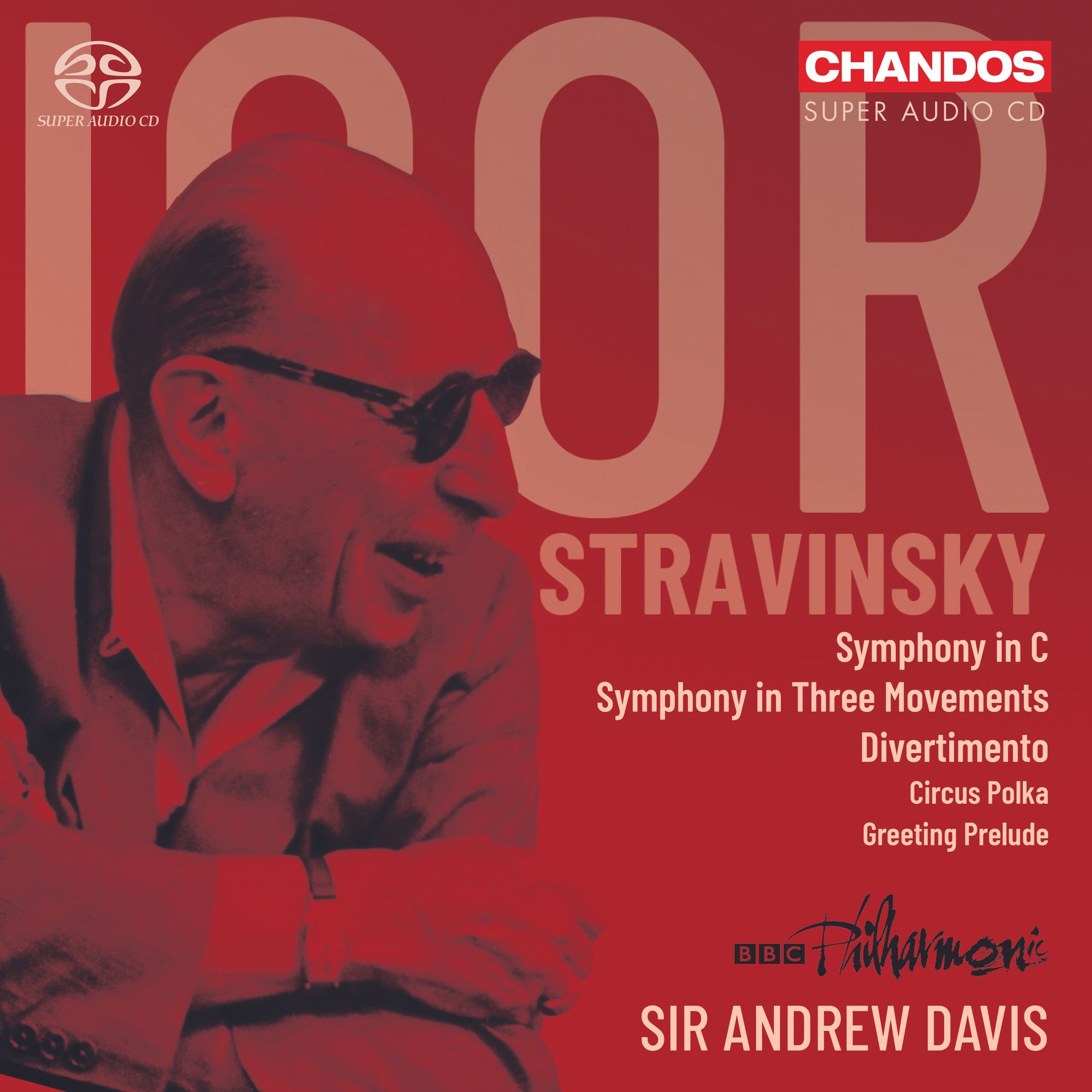Sir Andrew Davis conducts Stravinsky
A splendid disc. The BBC Philharmonic is on terrific form under Sir Andrew Davis

This is a wonderful, 83-minute selection of three of Stravinsky's most durable orchestral works with a sprinkling of shorter pieces.
We begin with one of those, the Greeting Prelude of 1956. Blink and you miss it - it is less than one minute long, but it is Stravinsky through and through. Written for the 80th birthday of Pierre Moneux (who had premiered both Petrushka and Le sacre du printemps), it was premiered by the Boston Symphonuy under Charles Munch. It is a serial work (it uses a twelve-note row), but a joyous one:
The Symphony in C, conceived in Paris in the late 1930's, had a long gestation. It was completed in the USA in 1940, and is dedicated to the Chicago Symphony on the occasion of its 50th anniversary; it is also “composed to the Glory of God”.
Paul Griffith’s typically prescient booklet notes point out the motivic kinship between the Symphony of Psalms and the Symphony in C (C - B - C - G); in Andrew Davis’ performance, the lithe nature of the first movement of the Symphony in C is writ large. It feels concise - not a note wasted, and with rhythms as tight as this, the effect is perfectly Stravinskian:
The slow movement is a Larghetto concertante for reduced-forces orchestra - Griffiths hits the nail on the head when he calls it a “dream of a Baroque pastoral”. - filtered, I should add, though Stravinsky’s charactertistic harmonic twists:
The third movement feels interludial, woodwind hroups riffing off each other playfully. Sudden contrasts are absolutely part of Stravinsky’s larger vocabulary, and Davis and his BBC forces carry them off brilliantly. But ut is the scoring of the opening of the finale that is truly fascinating: a pair of bassoons waver and waft in the wind, a memory of an ancient chant, perhpa,s ith dissonant horn punctuations rpdding them in the direction of the finale proper. When it comes, the finale proper takes the tempo from a Largo to an Allegro giusto (Alla breve) which, as the movement progresses, increasingly remembers the first movement and brings about a most satisfying sense of symmetry while itself propellling us towards the work’s conclusion:
The Divertimento (1934, revised 1949) is based on themes by Tchaikovsky from songs and piano pieces. Stravinsky creates a wondrous patchwork from his Tchaikovskian material: the whole is suffised with the atmosphere of the theatre and, specifially, ballet. The take of teh ballet itself is that of a fairy who kisses a young boy, claiming him as hers and, on the day of greatest happiness, takes his life in order to psosess him; Stravinsky related the fairy to Tchaikovsky’s famous muse. The music is graphically descriptive uet perfectly pitched. Davis’ performance is light and graceful in the opening Sinfonia:
I love Davis’ raucous way with the “Danses suisses” second movement - and the way he can switch to sweet, dissonance-tinged, Petrushka-like nostalgia - not to mentioning the yodelling brass!:
There is some lovely, quicksilver playing in the Scherzo, playful and sprightly. But it in the finale that pure delight comes, with the music treatening to veer off into pure Tchaikovsky (Nutcracker, anyone?) at any moment. The BBC Philharmonic woodwinds are a complete delight and, as everywhere on this disc, rhythms are finely-honed:
Compare Davis and the BBC Philharmonic to Riccardo Chailly with the London Sinfonietta . The link takes you to the complete Chailly Divertimento on one YouTube entry - it was recorded in London’s Kingsway Hall in June-July 1980 . Three movements apoear on the Riccardo Chailly Stravsinsky Edition recently issued by Decca, and hearing them through good quality speakers ias a joy, but the slightly warmer acoustic blunts the edges a touch - not something Davis suffers from.
It is a lovely idea to have the shorter work as lead-in and divider: the Circus Polka effectivesly separates the Divertimento and the Symphony in Three Movements as a little interlude, cheeky, brash and wonderful. This is a ballet for young elephants at the suggestion of George Ballanchine (who had been asked to create a dance for elephants by the Barnum & Baily Circus). The piece wittily quotes Schubert, too (the Marche militaire, D733/1, which you can hear in this video in the original via a performance by the time-honoured duo of Christoph Eschenbach and Justus Franz):
Finally, the Symphony in Three Movements in a powerhouse of a performance. Those sprung rhythms that underpin some of the quieter, contrastive moments are like coiled springs in Davis’ performance over which Stravinsky inserts characteristically spiky comments. Davis finds a sudden moment of halo-like calm at the close:
The first movement was apparently inspired by films of chinese scorched earth tactics and by goose-stepping soldiers and the rise of the Allies. The second movement also had filmic inspiration - in this case Franz Werfel’s movie The Song of Bernadette (1943). Here’s the movement in question:
... and here’s the movie, all two hours 37 minutes of it!.
The finale is gloriously unbuttoned.I am not entirely sure what Paul griffiths means when he says that “The finale ... progresses through a variety of episodes that seem to be there only to delay the dinning close’. Still, it is a variegated movement and Davis captures light and shade as well as black-and-white juxtapositions brilliantly:
A splendid disc. The BBC Philharmonic is on terrific form under Sir Andrew Davis, and the sound is perfectly judged by the Chandos engineers - the venue was Salford’s MediaCity in Manchester.
